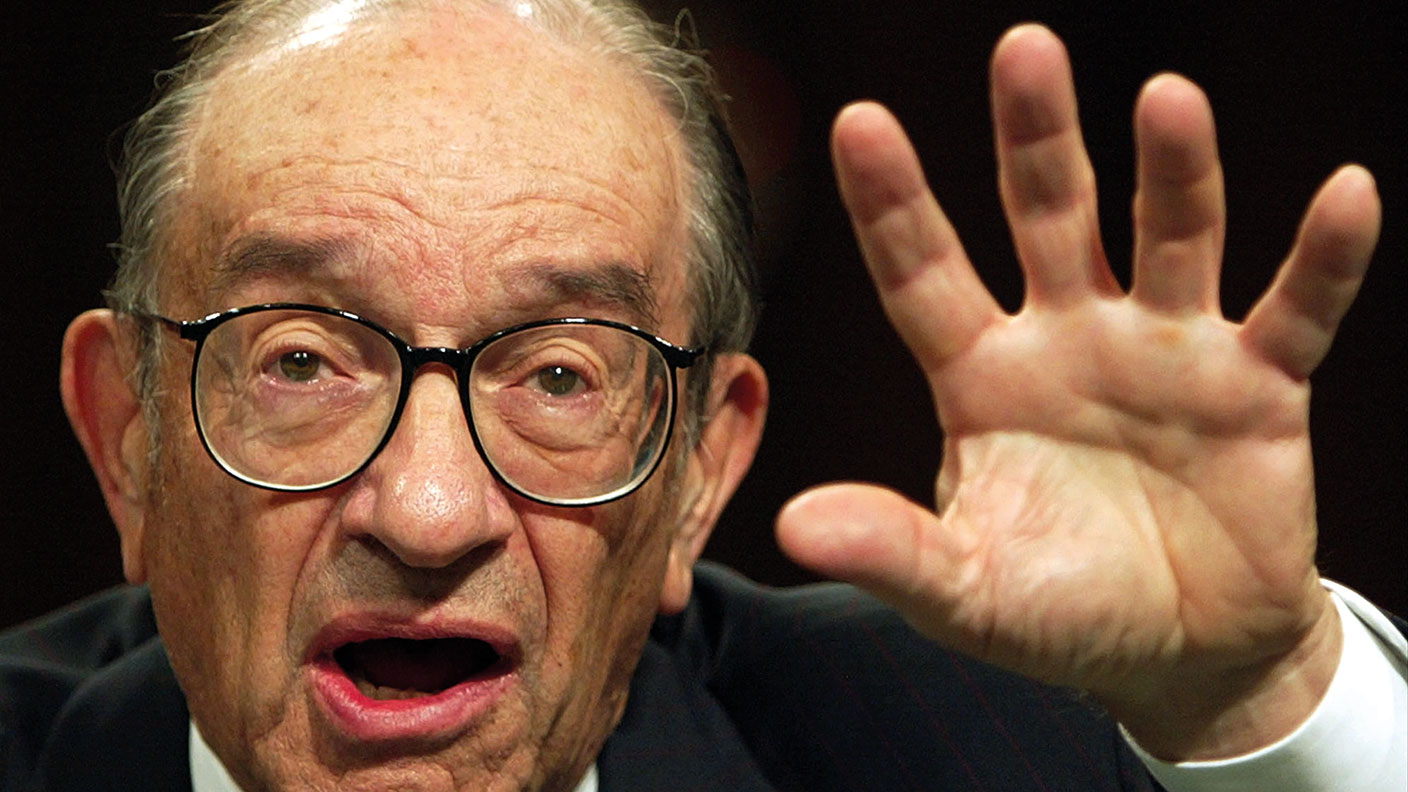How a bubble in bitcoin could lead to hyperinflation
Libertarians hope that cryptocurrencies will undermine central bank control of monetary policy. They should be careful what they wish for, warns author and analyst Bernard Connolly.

The volume of central-bank warnings about the rise of private cryptocurrencies – and the potential impact on the ability of central banks to conduct monetary policy – has become ear-splitting. This criticism only serves further to convince libertarians that reducing the power of central banks and governments is desirable. Certainly, the hostility of China’s authorities towards private cryptocurrencies can be presented as evidence that they are viewed by the state as a defence against intrusive social control. But whether that point of view is correct, or – where it concerns monetary control rather than social control – it is dangerously naive, there is another, undeniably serious problem with cryptocurrencies. It’s a problem so far only hinted at by central banks, but about which libertarians should be the most worried. The problem is about bubbles.
There are now many bubbles in the world but they differ in nature and consequences. An equity bubble can be perfectly rational. The price of equities can keep rising without end, assuming that “real” (adjusted for inflation) interest rates do not go up and stay up. Assuming a growing global population, the supply of “greater fools” to sell to at a higher price is theoretically endless. The idea of a “bond bubble” is harder to rationalise. Unlike equities, virtually all bonds have a terminal date – their maturity date. If you buy a bond with a negative interest rate (a negative “yield”), you know for sure that you will suffer a nominal loss if you still own it when it matures (the loss will be even worse in real terms). So if you are worried that other assets are overvalued and might crash, why not just hold cash?
Yet many professional investors currently own bonds trading on negative yields. This only makes sense if they expect rates to go even more negative, producing a capital gain (bond prices and bond yields move inversely to one another). But even then, the price of the bond must eventually go back to par (its “face value”), inflicting a capital loss on whoever had bought it at a price above par. Implicitly then, the expectation is that the ultimate “greater fool” will be the central banks, who are not motivated by returns and can expect to be re-capitalised by their governments – albeit at considerable cost to their independence – should capital losses threaten their solvency.
MoneyWeek
Subscribe to MoneyWeek today and get your first six magazine issues absolutely FREE

Sign up to Money Morning
Don't miss the latest investment and personal finances news, market analysis, plus money-saving tips with our free twice-daily newsletter
Don't miss the latest investment and personal finances news, market analysis, plus money-saving tips with our free twice-daily newsletter
Alan Greenspan’s big mistake
Bubbles both in bonds and in equities are symptoms of a deep-rooted disequilibrium in today’s advanced economies. The downward trend in real long-term interest rates which has persisted throughout this millennium and has only been accentuated by the pandemic, fuelled the bubbles which have been needed to regain and maintain full employment and fend off deflation. Why has this happened?
Interest rates are “intertemporal” price signals – they balance supply and demand for money across time. When these signals go awry, it results in the misallocation of resources across the economy. Our current disequilibrium stems from the second half of the 1990s. Then-Federal Reserve chairman Alan Greenspan failed to allow real long-term interest rates to rise at the right time in response to very buoyant entrepreneurial expectations in the internet-driven “new economy”.
As a result, not enough spending on consumption was deferred during this period. Indeed, the dotcom-era equity bubble boosted spending even further. As a result, when extra “new economy” supply came online, there was no “pent-up” demand from previously-deferred spending (ie, savings) to take it up. That error, combined with the far less innocent catastrophe of monetary union in Europe, ensured that intertemporal price signals – ie, interest rates – went badly wrong and have been wrong ever since. A secular trend to ever-lower rates and ever-bigger bubbles was put in place.
An illusion of wealth
The equity bubble, in particular, has created the illusion of wealth. It is illusory – for economies as a whole – because it is not based on vastly increased future productive potential (if anything, estimates of such potential have persistently been cut). The political implications of the resulting wealth inequalities are disturbing, but have not so far produced serious trouble. That’s because they have not caused overheating in the economy: the extra spending generated by this illusory increase in wealth has offset the drag of the intertemporal disequilibrium (in which past bringing-forward of spending from the future leaves a hole in demand as the future becomes the present).
But if dangerously high levels of public “investment” spending produce inflation – as many fear they might in the UK and, particularly, in the US – some holders of equity “wealth” might think they should spend more of that wealth before its real value falls. But the only way they could do that without producing a spiral of ever-increasing inflation, is if everyone else’s spending were to fall. Distributional concerns then really would become a major political issue.
An even riskier mania
Yet there is another, even more dangerous bubble that has developed in the past few years. This is one that, if unchecked, is bound to produce cataclysmic changes in wealth distribution. That bubble is in private cryptocurrencies. As with equities, cryptocurrencies have no terminal date. So a bubble can be rational in the same way. However, once the macroeconomic context is considered, it becomes clear that the bubble must pop.
Why? Either the market price of bitcoin, for example, can become infinite or it cannot. If it cannot, then at some point the only possible change in the market price of bitcoin is negative. At that point, all holders would want to sell (unless central banks – as with bonds – were expected to support the bitcoin price indefinitely!).
If instead the price can and does move towards infinity, then the use of an infinitesimal amount of a single person’s bitcoin wealth would exhaust all the world’s productive potential; that is, each holder could command all the world’s resources by being the first to sell and spend. The rise in the general price level towards infinity as bitcoin holders competed for resources would impoverish everyone else.
It is clear that many governments – most relevantly the US government – now want to produce huge wealth transfers. Whether they are right or wrong is a matter for debate. The key questions are: how to distinguish in practice between what I have called “acceptable” wealth (wealth whose possession does not entail a reduction in lifetime consumption possibilities for everyone else) and “unacceptable” bubble wealth, whose possession does reduce lifetime consumption possibilities for everyone else?; and how to eliminate unacceptable wealth without crashing the economy.
But whatever your view, the wealth transfer that bitcoin threatens to produce is definitely not the one that the US government or any other wants to produce. When the bubble is growing, it does not create extra wealth in the form of future productive potential for an economy as a whole. It simply transfers wealth to existing holders of bitcoin from everyone else. That creates pressure on everyone else to join in.
Governments will have to burst the crypto bubble
To avoid serious social and political discontent, leading to unrest and ultimately sociopolitical breakdown, the authorities will have to burst the bitcoin bubble before its macroeconomic importance becomes much greater. The similarity with bank runs is rather clear. If none of, say, the ten biggest providers of liquidity to Lehman Brothers had withdrawn their funding, in all probability no-one else would have done so. If those ten withdrew their funding, in all probability everyone would do the same. Similarly, as the ratio of “illusory-wealth-to-potential-income” in the economy gets bigger and bigger, the temptation for someone to jump ship and be the first to use their assets to acquire real resources becomes greater and greater.
Indeed, one can view the inverse of this “illusory-wealth-to-potential-income” ratio as the equivalent to a bank’s capital ratio during a financial crisis. That ratio moves in the wrong direction as the illusory nature of many of the bank’s assets becomes apparent. In turn, the incentive for its debt-holders to withdraw grows ever greater. It is deeply ironic – and tragic – that while the reaction of central banks and regulators to the financial crisis (which they themselves created) was to insist on higher capital ratios for banks, monetary policies have operated, and continue to operate, to weaken the economy’s “capital ratio”. Barring a radical change in the policy framework, the likely result will be a devastating economic, financial, social and political crisis far worse than anything that might have been produced by the 2007-9 financial crisis. Marxists might rejoice in such a prediction. Libertarians should be anxious to prevent it from coming true.
The longer that central banks wait before taking action to prevent a swelling of cryptocurrency bubbles, the more difficult they will make their task. Bank of England governor Andrew Bailey has warned bitcoin “investors” that they risk losing all of their money. But if the bubble first gets much bigger, its bursting will have significant macroeconomic effects, as spending financed by borrowing against bitcoin “wealth” vanishes. Worse, devastating losses will be inflicted on speculators, among whom will be more and more ordinary households. The fact that they have been warned will not prevent potentially seismic reactions.
Central banks and regulators thus now have an unenviable choice. Presumably, they will not want to be blamed by crypto “investors” for a burst bubble. So they may hope that it subsides of its own accord, then regulate it out of existence. But if the bubble keeps growing, they must grasp the nettle and inflict losses now, or face a future sharp-elbowed scramble to convert crypto holdings into goods and services, which will produce hyperinflation and destroy society.
Get the latest financial news, insights and expert analysis from our award-winning MoneyWeek team, to help you understand what really matters when it comes to your finances.
Oxford-educated economist Bernard Connolly is the author of The Rotten Heart of Europe: The Dirty War for Europe’s Money.
-
 5 investment trusts for your pension
5 investment trusts for your pensionInvestment trusts are often a good choice for long term growth and income options, but which ones should you consider for your pension?
-
 Inheritance tax climbdown as agricultural property relief threshold raised
Inheritance tax climbdown as agricultural property relief threshold raisedReforms to agricultural property relief had sparked strong opposition, and the government has now diluted its controversial inheritance tax plans for farmers